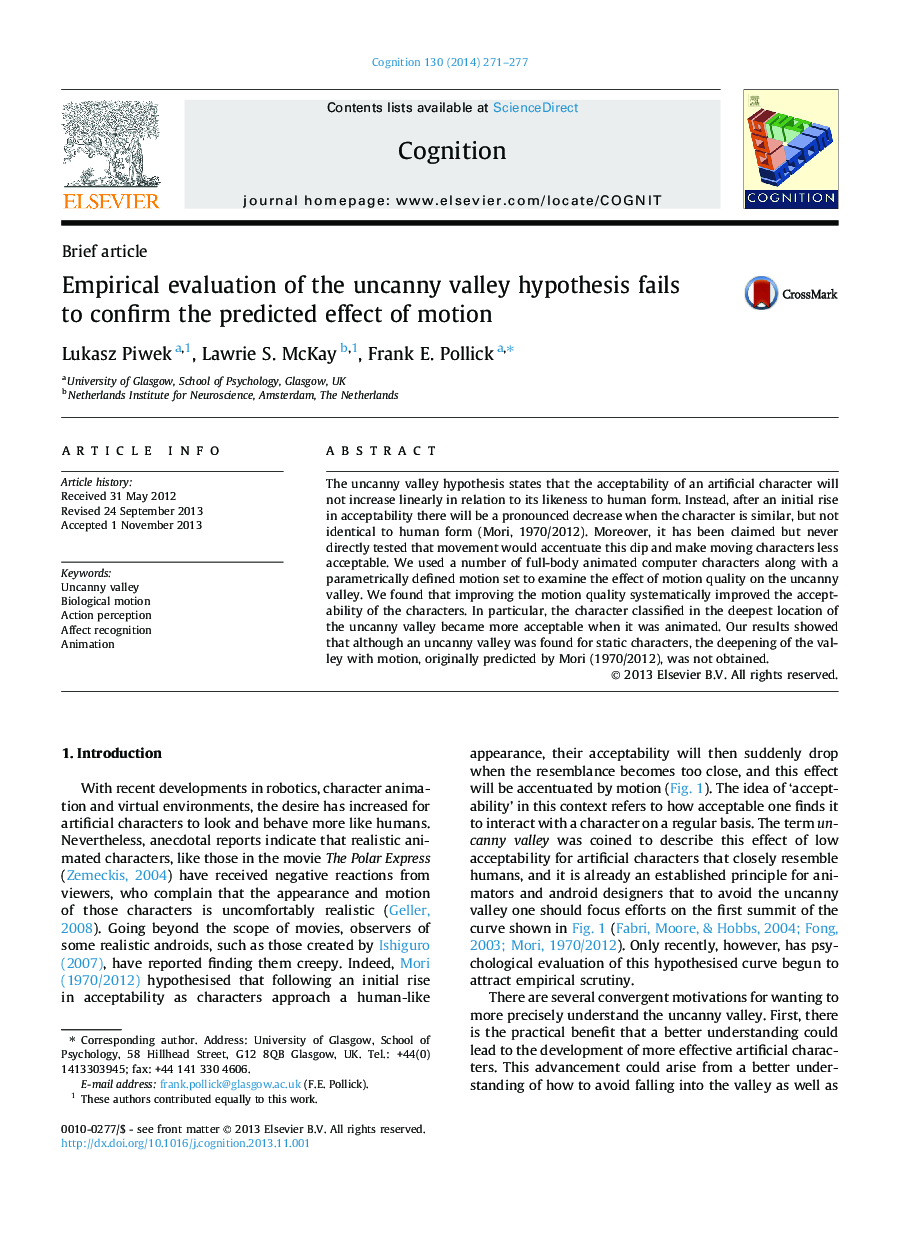| Article ID | Journal | Published Year | Pages | File Type |
|---|---|---|---|---|
| 7287714 | Cognition | 2014 | 7 Pages |
Abstract
The uncanny valley hypothesis states that the acceptability of an artificial character will not increase linearly in relation to its likeness to human form. Instead, after an initial rise in acceptability there will be a pronounced decrease when the character is similar, but not identical to human form (Mori, 1970/2012). Moreover, it has been claimed but never directly tested that movement would accentuate this dip and make moving characters less acceptable. We used a number of full-body animated computer characters along with a parametrically defined motion set to examine the effect of motion quality on the uncanny valley. We found that improving the motion quality systematically improved the acceptability of the characters. In particular, the character classified in the deepest location of the uncanny valley became more acceptable when it was animated. Our results showed that although an uncanny valley was found for static characters, the deepening of the valley with motion, originally predicted by Mori (1970/2012), was not obtained.
Related Topics
Life Sciences
Neuroscience
Cognitive Neuroscience
Authors
Lukasz Piwek, Lawrie S. McKay, Frank E. Pollick,
